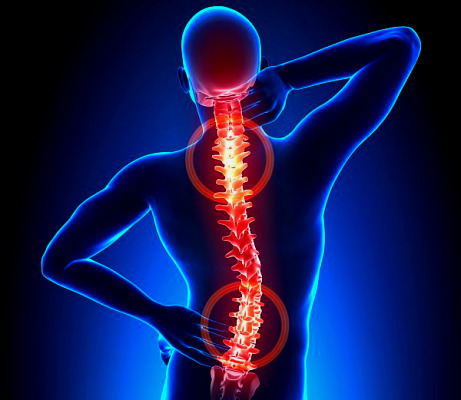“Sciatica pain is not a condition but a symptom”.
Sciatica pain is the name given to pain caused by the irritation of the sciatic nerve. The sciatic nerve is the longest nerve in the body. The sciatic nerve is situated between the bony posterior processes of the spine and serves both legs, that is, the nerve that branch from the lower back through hips, buttocks down each leg.
Although it is not a permanent lifelong ailment; 40% people suffer from this at least once in their life.
Sciatica pain is a mild, irritating, debilitating pain, with or without swelling in the legs, back, hands, neck and shoulders. The pain radiates along the path of the sciatic nerve. Typically sciatica pain affects only one side.
Symptoms
- Shooting pain along the nerve.
- Numbness in the leg along the nerve.
- Tingling sensation in the feet and toes.
- Inflammation or some numbness on the affected area
Severe cases can cause significant leg weakness or bowel or bladder changes, and then surgery may be an answer. Scans and detailed doctor intervention will be needed thereafter.
Sciatica pain can be mild, sharp, sensation of burn, excruciating, sometimes like a jolt or shock and worsens when one sneezes or coughs. Prolonged suffering can aggravate one side of the body with temporary incapacity. It may be a result of compression of an intervertebral disc.
Causes
- A sudden twist or pull or injury
- Narrowing of spinal cord in the lower back
- Spondylosis, where the disc slips forward over the vertebra below it
- Tumour
- Infection
- Rare condition affecting the lower part of the spinal cord
Risk factor
Age: There is no rule that this condition is for the aged, but by and large the elderly are more prone to injury and risk of tripping and falling.
Obesity: It is important to reduce the weight on the spine. So keeping weight under control would be a good idea. Reduce weight rather than increase load on spine.
Occupation: Carrying heavy load, driving a car for a long time and work involving twisting can aggravate the condition. Sports people are prone to this condition too.
Diabetes: This disease causing high blood sugar can affect the nerve ends causing nerve damage.
Lifestyle: Prolonged hours of sitting down is risky. Sedentary lifestyle can weaken the spine. Interrupt sitting hours with standing and stretching the back.
Treatment
Diagnosis is largely a matter of conjecture and treatment is empirical. The pain may be mild and can be resolved in a few weeks in about 4/8 weeks with rest, exercises and pain killers. Hot and cold compress, exercise, and physiotherapy can be very helpful.
If the response is negative, surgery might be needed to widen the spinal cord to reduce the pressure or partial or entire removal of the herniated disc.
Prevention
- Exercise, light walking or spine strengthening exercises with the advice of a physical trainer can help.
- Proper posture is very important for your back and spine. Keeping back straight, head and shoulders well aligned when walking or sitting, avoid watching TV in semi sitting or hunched positions are the key preventive measures.
- Choose good chairs with fewer cushions. Sometimes put pillows beneath knees when lying down. Ensure a good quality mattress on a firm bed.
We at TriBeCa Care can provide you with all the help you need regarding your sciatica pain. For more information, call us at: 03340277777 / 8017770323 or email us at: enquiry@newwpsite.tribecacare.com. Visit our page at: www.tribecacare.com.
Reference:
- https://www.mayoclinic.org/diseases-conditions/sciatica/symptoms-causes/syc-20377435
- https://www.webmd.com/back-pain/ss/slideshow-visual-guide-to-sciatica

